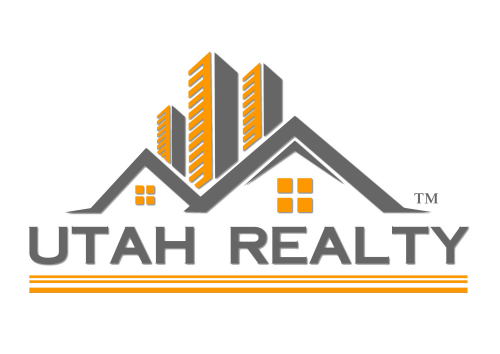 11 Must-Do Actions To Ensure A Smooth Transition Into Your New Residence
11 Must-Do Actions To Ensure A Smooth Transition Into Your New Residence
Moving into a new residence marks a significant milestone that brims with excitement and potential. However, to translate this new beginning into a seamless transition, careful planning and a series of deliberate actions are quintessential. In this article, we delve into 11 crucial steps aimed at streamlining your move, ensuring that every aspect of your relocation is meticulously organized and executed. From pre-move preparations to settling-in strategies, these insights are designed to minimize disruptions and set a solid foundation for a comfortable and efficient transition into your new home.
Organizing Essential Utilities And Services
Before setting foot in your new home, a crucial step to ensuring a smooth transition involves organizing essential utilities and services. This process includes transferring or initiating services such as electricity, gas, water, internet, and possibly security system monitoring. It’s advisable to contact these service providers at least two to three weeks in advance of your move. By doing so, you can guarantee that all necessary utilities are operational from day one in your new residence. Furthermore, this proactive approach allows you to compare plans and rates, potentially uncovering cost-effective options that align with your budget and lifestyle needs. Remember, scheduling installations or service switches in advance also helps in avoiding any unexpected delays, ensuring that your move is as seamless as possible.
Additionally, it is paramount to update your address with relevant institutions and service providers, including banks, insurance companies, and subscription services, to ensure a continuous and uninterrupted flow of services and communications. Consulting with the previous occupants or the property management can provide valuable insights into which services and providers offer the best connectivity and reliability in your new area. They may also suggest local amenities and service professionals for tasks such as landscaping or house cleaning, further easing your transition. By systematically addressing these utilities and services ahead of time, you not only secure the functionality of your new home but also forge a pathway for a stress-free and comfortable resettlement.
Establishing A Strategic Moving Plan
Starting with a strategic moving plan is imperative to guarantee a seamless transition into your new residence. It begins with selecting the optimal moving date, which often hinges on personal schedules, job obligations, or the academic calendar if children are involved. Once a date is set, creating a comprehensive to-do list that encompasses all the necessary steps—ranging from hiring movers or renting a truck, to transferring utilities and updating addresses—ensures nothing falls through the cracks. This list should ideally be segmented by timeline, with tasks categorized as immediate (to be done now), short-term (to be done within the next month), and long-term (to be completed before the move). Such meticulous planning not only promotes efficiency but also significantly reduces the stress associated with relocation.
Furthermore, thoroughly researching and selecting the right moving company is a crucial step in your strategic moving plan. Look for companies with outstanding reviews, appropriate licenses, and insurance to protect your belongings. It’s also beneficial to obtain multiple estimates to ensure competitive pricing. Meanwhile, for those opting to move independently, securing the necessary equipment and understanding rental policies is key. Beyond logistics, a well-thought-out budget that accounts for all moving expenses—unexpected and expected—is vital. This financial plan should include packing supplies, mover or rental truck fees, and any immediate home improvements needed in the new residence. By addressing these aspects early on, you are setting a solid foundation for not just a successful move, but also for the peaceful enjoyment of your new home from day one.
Securing Your New Home: Safety And Maintenance Checks
When preparing for a move, a paramount consideration should be the security and maintenance of your new home. Prior to settling in, conducting a comprehensive inspection of the property is crucial. Start with a security assessment, ensuring all locks on doors and windows operate effectively and replacing any that do not. This might also be an opportune moment to consider upgrading to smart locks for enhanced security and convenience. Additionally, installing a security system or checking if one already exists and is functioning properly can provide peace of mind. It’s also advisable to familiarize yourself with the local emergency services and their contact information, positioning you to react swiftly in any unexpected situations.
Beyond security, a thorough review of the house’s maintenance status is indispensable. This involves checking the electrical system, including outlets and circuit breakers, to confirm they are in good working order and meet your needs. Inspect the HVAC system to ensure it’s functioning efficiently, as this will impact your comfort and potentially your utility bills. Plumbing should also be examined for any signs of leaks or old fixtures that might need replacing to prevent water damage. If possible, consider hiring professionals to conduct these inspections, as their expertise can uncover issues that may not be immediately apparent. Addressing these items before moving in can significantly reduce the risk of inconvenient or costly repairs down the line, setting the stage for a smooth transition into your new residence.
Navigating Your New Neighborhood: Integration And Exploration
Successfully relocating to a new residence involves more than just moving your belongings; it also requires integrating into your new community and exploring your surroundings. A fundamental step to achieving this is to familiarize yourself with the essential amenities and services in your area. Take the time to locate the nearest grocery stores, pharmacies, hospitals, parks, and public transportation options. This not only makes your daily life more convenient but also helps in emergencies. Additionally, understanding local laws and regulations, such as recycling policies or parking rules, can prevent unnecessary stress and fines, ensuring a smoother transition.
Engaging with your new neighborhood also means embracing opportunities to connect with people. Consider joining local organizations or social groups that align with your interests or volunteering for community service. These activities are not only beneficial for networking and making friends but also for understanding the cultural and social dynamics of your new area. Furthermore, participating in local events and festivals can enrich your experience and foster a sense of belonging. Exploring local businesses, such as restaurants and shops, supports the economy and helps you discover the unique flavors and products of your community. These steps towards integration and exploration are crucial for building a comfortable and fulfilling life in your new residence.
In conclusion, moving into a new residence demands a strategic approach that encompasses organizing essential utilities and services, establishing a solid moving plan, ensuring the safety and maintenance of your new home, and finally, integrating and exploring your new neighborhood. By diligently following these must-do actions, you are setting the stage for a smooth and successful transition. Remember, the effort and organization you invest upfront can significantly minimize the challenges and stress often associated with relocating. Embrace this opportunity to create a comfortable and secure environment in your new residence, fostering a sense of belonging and community from day one.
